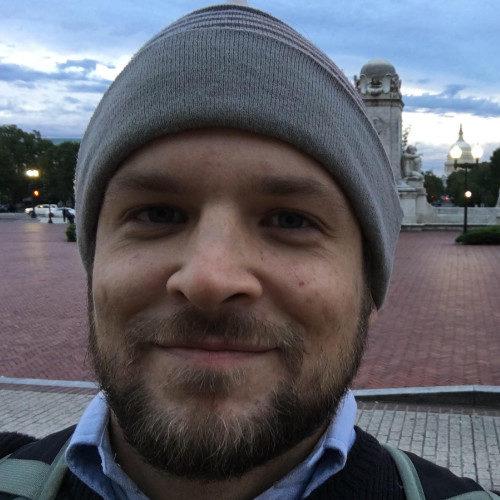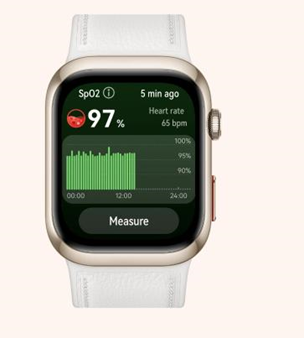At age 10, a teacher asked me to write an essay on what I would do to fix a world problem. I declared that I would like to ban money because I saw it at the root of much evil. That idea was clumsy, and what I’ll outline here might be, too, so I present it in a spirit of total humility. Much important work remains to be done to improve this extremely subtle, significant and social institution.
The problem is real. Everyone from Keynesians to bitcoiners agrees that the ways we measure, store and exchange value are flawed at best and broken at worst. I don’t think we’re any closer to an ideal form of money than we are to an ideal language or government. That’s why it’s so exciting to live in an era of programmable money, where we can strip the institution to the studs and rebuild it, in ways that would have only recently been hard to imagine. I’m somewhat disappointed with the monetary innovation that has happened in blockchain technology’s first decade. But many possibilities are only just coming into focus.
Matt Prewitt, the president of the RadicalxChange Foundation, will appear on the "Big Ideas" stage at CoinDesk's Consensus festival, which runs June 9-12 in Austin, Texas. Learn more.
In this essay, I’ll present a view of money as a communication technology. Then I’ll sketch some paths toward building a new and better kind of money, unlike either fiat or Bitcoin – money for a more prosperous and complex world.
Money is language
Money is a communication technology. It resembles language, democracy, law and telephone networks in that people use it to send messages.
Milton Friedman famously made this point using the example of a pencil. Nobody, he observed, really knows how to make a pencil. To even begin, you’d have to cut down a tree for wood. For that, you’d need a saw made of decent steel. For that, you’d need to start with iron ore. And what about the paint on the pencil, the rubber eraser, the finely processed graphite, the glue, the metal piece that attaches the eraser to the wood? Et cetera. Summoning this humble miracle is not some individual polymathic craftsperson, but simply the price mechanism, through which people around the world cooperate despite never meeting (and, Friedman significantly observes, possibly even hating each other).
Austrian School economists Friedrich Hayek and Ludwig von Mises similarly saw the economy as an information system, using price to integrate vast data about what people subjectively need where, when and how badly. I have important disagreements with these thinkers, but I share their view of the economy as an information processing system based on the price mechanism. Money is the language we speak and understand when we interact with one another through the economy.
Languages are imperfect
As with every other complex information processor, the economy’s informational outputs must be somehow compressed or diminished compared to what went in. This is connected to the principle that entropy, or disorder, tends to increase over time – the basic idea in modern information theory, and the ironclad second law of thermodynamics.
Currencies circulating locally rather than globally could bend market participants’ plane of focus like a lens.
It sounds awfully abstract to say that disorder increases in information systems, but the idea is simple. A photograph of a sunset always misses something. Words never perfectly convey their message. A map carries less information than the territory it depicts. This is the entire point of processing information: photographs, words and maps usefully summarize things that we couldn’t otherwise communicate. But we have to be very careful to understand the limitations of our summaries, and to realize that true progress flows from facing and mitigating those limitations. This is why photographers seek better cameras, languages evolve, and a map-maker’s work is never finished.
Money, too, carries information, and it is not exempt from this universal law. The question is not whether it muddles its messages, but how.
The information money carries
Cameras receive information through an aperture and form an image. Markets receive information through peoples’ decisions to buy, sell or hold things, and form a price. But what goes into the decisions that form prices? Do prices convey less information than they might, or superfluous information that they needn’t? If so, we might think of that like signal distortion or noise. And, just as a lens helps a camera capture a clearer image, a different kind of money might contribute to a better economy by capturing better information.
Whenever we take actions in markets – buy, sell or hold – we are always comparing alternatives. For example, would I rather have (a) $5,000 or (b) a beautiful antique table? The choice is actually much more complicated than it sounds because to choose wisely I have to think about people other than myself. For example, I might sorely need $5,000, and dislike the table.
But if I think that someone out there in the marketplace would be willing to pay $7,500 for the table, then my expressed preference will change. Eyeing a $2,500 profit, I’ll communicate to the market that I prefer the table to $5,000, even though this is flatly untrue. I just prefer $7,500 to $5,000.

If we want prices to tell us what the global highest bidder will pay, then this process looks efficient. But from another perspective, it looks noisy and wasteful. After all, everyone participating in a market knows more about themselves than they know about others. So you’d think we’d want markets to gather that special information that every actor is in a uniquely good position to give: How much do you want the table? But, instead, the global market asks us also to speculate about what the world’s richest table enthusiast would pay, and incorporate that into our decisions to buy, sell or hold.
Stated differently, the global market asks us to think and communicate about things we aren’t in any special position to know about. This is a significant cognitive burden, multiplied across countless decisions in the economy. And it drowns out other information from the price signal. Even though everyone participates in markets, markets aren’t finding out what everyone thinks about the value of things. They’re only finding out what the highest bidders think.
A reason Austrians like gold
My argument partly tracks the case some Austrian School economists make for gold (and now bitcoin). These hard-to-mint kinds of money ease people’s cognitive burdens, according to the Austrians, by making it simple to save. By contrast, the threat of inflation with easy-to-mint money forces everyone to invest rather than save: We all have to “play the markets,” guessing about what the global highest bidders are going to pay next year for tech stocks, euros and beachfront real estate, instead of just socking money away and planning for our own futures. This amounts to a division-of-labor problem. It means people who are great at, say, music must spend less time making brilliant music and more time amateurishly investing money, just in order to not lose what they’ve earned.
But (and here’s where I leave Salzburg): Markets asking everyone to think seriously about what other people are going to want next year isn’t necessarily such a bad thing. Arguably, it’s a feature rather than a bug – inducing distributed intelligence into the problem of capital allocation across society might be worth the mental bandwidth it demands.
Yet the Austrians are pointing to a genuine problem, because it is wasteful for people to have to assess complex things they have no special knowledge about. Unhappily, the fiat-dominated global market asks us to do this all the time. But moving to a world in which everyone simply hoards hard money would swing the pendulum back to an opposite extreme of individualism, inattention to the capital needs of others and compounding power concentration.
The real problem arises from a difference in scale between an individual person and the global (or other very large) market environment in which they must set their prices. The chasm of scale between the limited concerns of individuals and the vastness of the market, makes the information they provide to markets noisy – like a microphone signal with too much gain or a photograph taken with too long an exposure.
The situation could be completely different, though, if markets incentivized us to price things in local rather than global terms. Then, when making our decisions to buy, sell or hold, we’d consider only what we need and what our communities need – not what the entire global market needs. This would not waste so much energy because our communities are close to us. We actually have special knowledge about them.
The promise of alternative currencies
This helps explain the attraction of local currencies (despite their challenges, which I’ll address soon). Currencies circulating locally rather than globally could bend market participants’ plane of focus like a lens, gathering less noisy information. Instead of trying to guess what an expert dealer in Manhattan might pay for an antique table, a participant in a truly local economy would only consider the value of the table to them, and those they know.
Shifting peoples’ attention in this way could unlock healthier and more self-sustaining economic communities. Global trade networks aren’t going anywhere, but meaningful local or community currencies could conceivably form new layers, contributing to a more richly textured global economy, following the principle of subsidiarity (the idea that decisions are best made nearest the people they impact).
Existing and emerging technologies will let us experiment more rapidly than ever before with currency governance.
Capturing locally-meaningful information in prices would facilitate more local transactions, as opposed to global ones. For example, talented professionals in Ohio or Nepal might work for more local businesses, helping to bootstrap local economies instead of holding out only for remote work from the same few global agencies.
Note too that “local currency” need not refer only to geography. We could imagine many intersecting currency networks, operating within communities defined in many different ways.
It’s hard to estimate how much wealth this could generate, but clearly systematically improving the informational quality of prices like this could be a very big deal. So why hasn’t it already happened? Many projects have done meaningful good, but none have truly revolutionized the economy in the way I’m suggesting. Why hasn’t the ease of creating ERC-20 tokens created a boom in community currencies?
Global currency and the trouble with 'exit'
Local currencies have always faced a serious headwind. Because when people accumulate a significant amount in them, they tend to want to exchange it for a more universal form of money. Even before they do that, they perform a mental translation: “How many dollars do I have right now in currency XYZ?”
This is natural because we can spend dollars anywhere, not just where we earned them. Taking what we earned in one community and bringing it to a second where it buys more lets us feel richer as individuals. And yes, there are gains from trade.
But from the point of view of the first community – where the accumulation occurred – this is air leaving the balloon. Local currencies will only truly sustain local economies if they manage to discourage people from exiting with capital.
In other words, for local currencies to capture more information than the global economy, we need people to think in terms of them, instead of always mentally translating to dollars or bitcoins. This might seem like an added cognitive burden – but remember, pricing everything in a local economy would be simpler because you wouldn’t have to consider the willingness-to-pay of strangers on the other side of the world.
The question is, how to do it? How could we actually build community-oriented currencies that people think in, instead of exiting from?
Values, incentives and exit costs – why use local currencies?
An important motivator of community currency use is expressing shared values. Accepting a community’s currency would be a signal of support. Spending it would be a signal of belonging. And the unique values of the community would show up in the resultant economy.
But to preserve this special, local information – this expression of particular, shared values against the winds of global economic incentives – there needs to be a cost (either a direct cost or a clear opportunity cost) to extracting capital from the system. And to be sustainable, that cost would need to be something other than a speculative belief that prices will rise. (Sorry: HODLers aren’t a real community.)
Existing and emerging technologies will let us experiment more rapidly than ever before with currency governance. The key will be to make local and community currency systems semipermeable. We want them to hold energy in, like efficient internal combustion engines – while also breathing and interacting intelligently with the outside economy, like cell membranes with transport proteins. Here are two incentive structures pointing in that direction.
Conclusion
Money isn’t perfect. It has changed throughout history; it’s a technology that can be improved. In the modern era, it is failing us because it’s too universal. It draws our attention away from the communities that are the real sources of our wealth. The biggest opportunity new technologies afford is not to help us “exit” our communities, but to help us to commit to them. This could make the world not only wealthier, but more pluralistic.
The views and opinions expressed herein are the views and opinions of the author and do not necessarily reflect those of Nasdaq, Inc.









